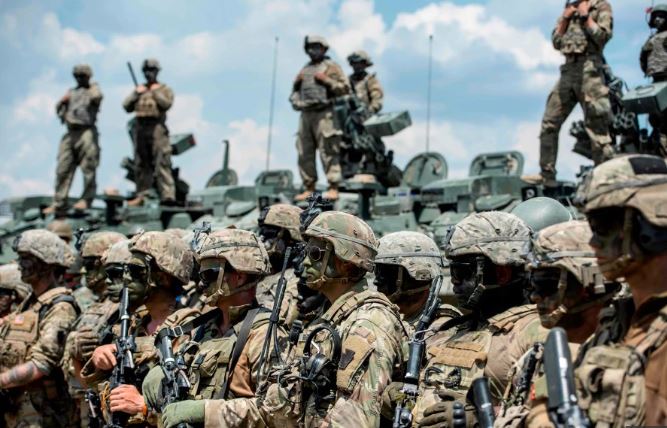
Acting US Secretary of Defense Patrick Shanahan announced that the US was sending some 1,000 additional troops to the Middle East, like reported by kurdistan24.net.
The new deployment comes as tensions with Iran remain high. As Shanahan affirmed, “The recent Iranian attacks validate the reliable, credible intelligence we have received on hostile behavior by Iranian forces and their proxy groups that threaten United States personnel and interests across the region.”
The US earlier announced two other deployments to the region—on May 5 and May 24, but they have not prevented a series of relatively small scale attacks.
On June 13, two oil tankers were attacked in the Gulf of Oman, just east of the strategic Strait of Hormuz through which much of the world’s oil is shipped.
On June 14, three mortar shells were fired at Iraq’s Balad Air Base, north of Baghdad, where US trainers are posted. The shells, however, caused little damage.
Also on June 14, a rocket fell in Baghdad’s Jadriyah neighborhood, on the east bank of the Tigris. The rocket was likely aimed at the “Green Zone,” on the river’s west bank, where the US embassy is located, but fell short of its target.
Moreover, on June 12, Iranian-backed Houthi rebels in Yemen launched a cruise missile attack on Abha airport in southwest Saudi Arabia. Some 26 civilians were wounded. Subsequently, the Houthis used drones in an attempt to attack the Abha airport again, as well as another airport in Jizan, some 125 miles to the south. However, the drones were shot down before they could reach their targets.
The announcement of the new US troop movement came on the same day that Tehran announced that its stockpile of enriched uranium would soon surpass the limit set in the 2015 nuclear accord—unless Europe did more to restore trade with Iran, which fell dramatically after the US reimposed sanctions following its withdrawal from the nuclear accord.
Shanahan stressed that the new deployment was being made at the request of the US Central Command (CENTCOM) and that it was for “defensive purposes.” It is intended “to address air, naval, and ground-based threats” in the region, he stated, alluding to the broad range of attacks, whether from Iran or its proxies.
“The United States does not seek conflict with Iran,” Shanahan affirmed. “The action today is being taken to ensure the safety and welfare of our military personnel working throughout the region and to protect our national interests.”
Speaking on Sunday to CBS News, Pompeo said, “The United States is considering a full range of options” to deal with Iran.
Asked, “Does that include a military response,” he responded, “Of course, of course.”
On Tuesday, Pompeo is visiting CENTCOM headquarters in Tampa, Florida.
US President Donald Trump has repeatedly said he does not want a war with Iran, but would like to begin negotiations. However, when Japanese Prime Minister Shinzo Abe visited Tehran last week to explore prospects for such talks, he was rebuffed by Iran’s Supreme Leader, Ayatollah Ali Khamenei.
“I do not see Trump as worthy of any message exchange, and I do not have any reply for him, now or in future,” Khamenei told Abe, according to Iran’s official media.


